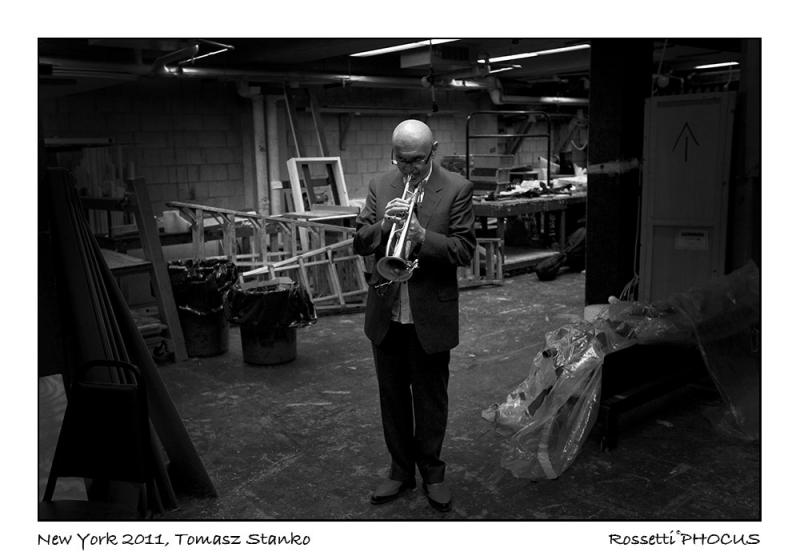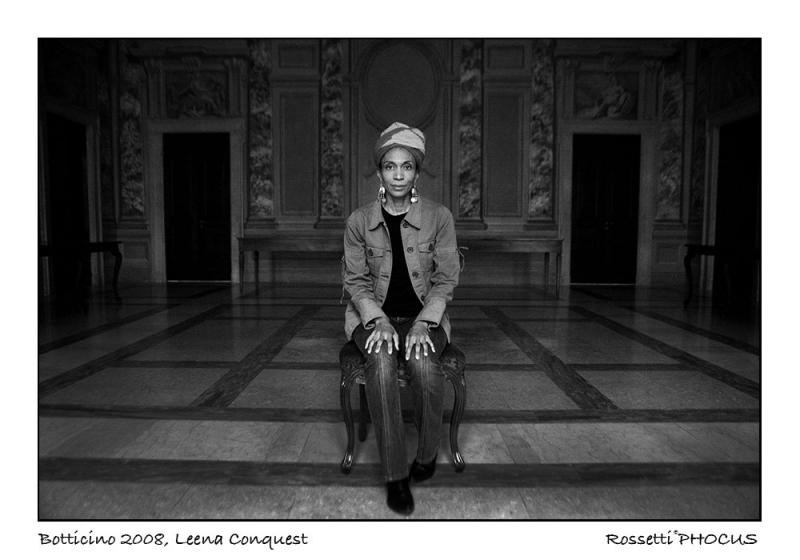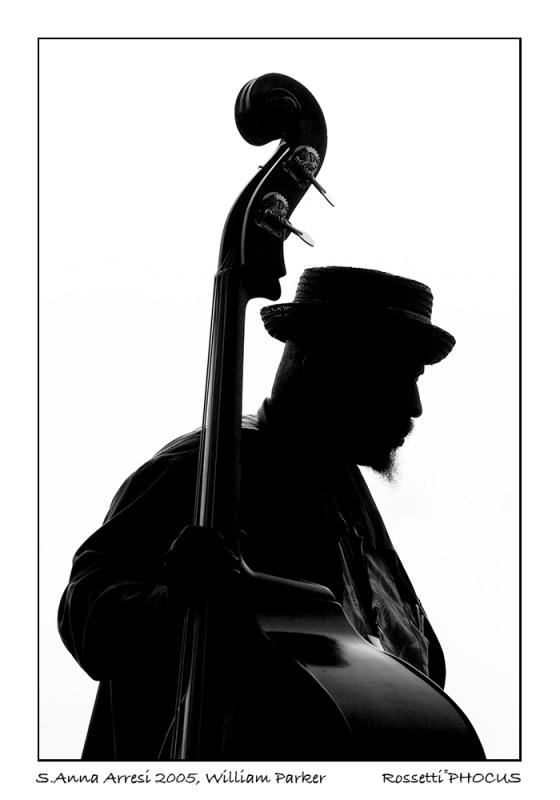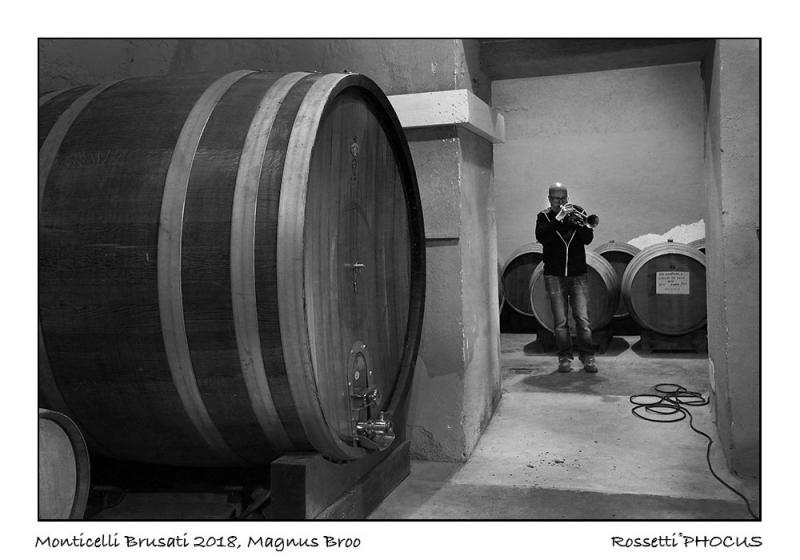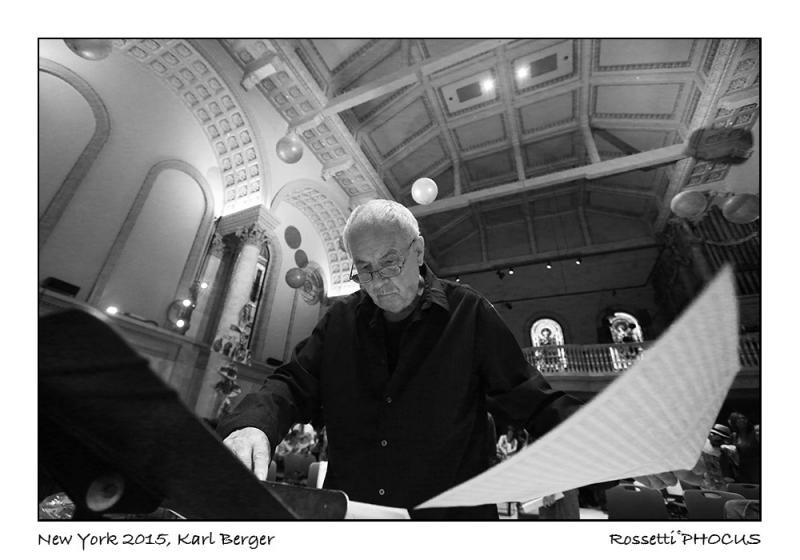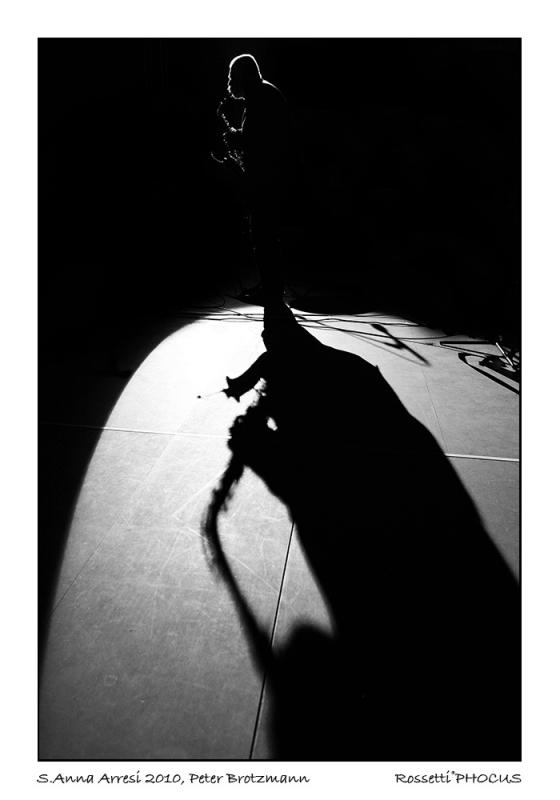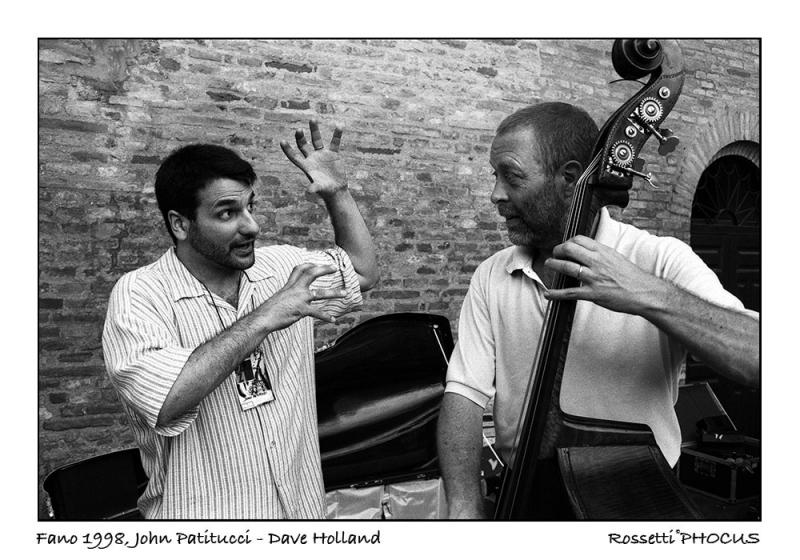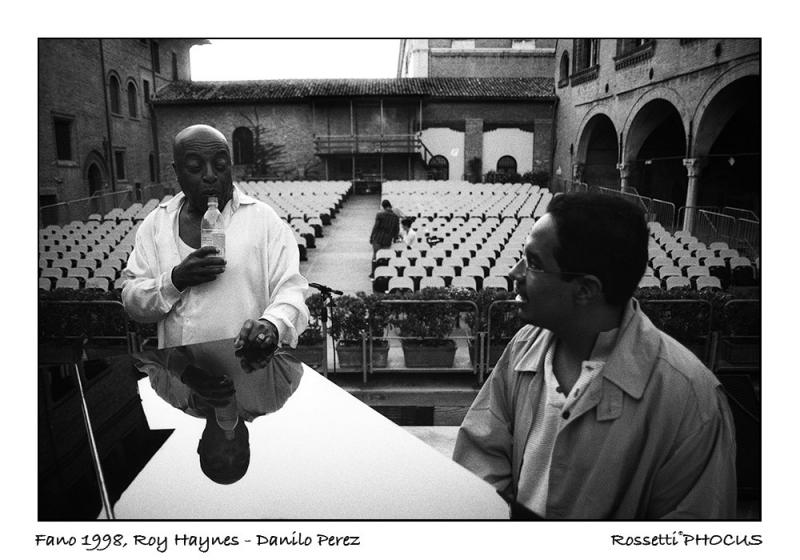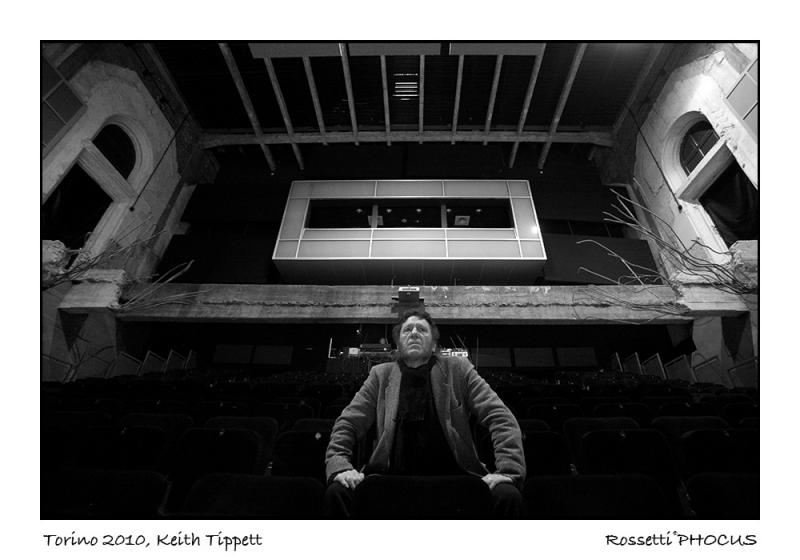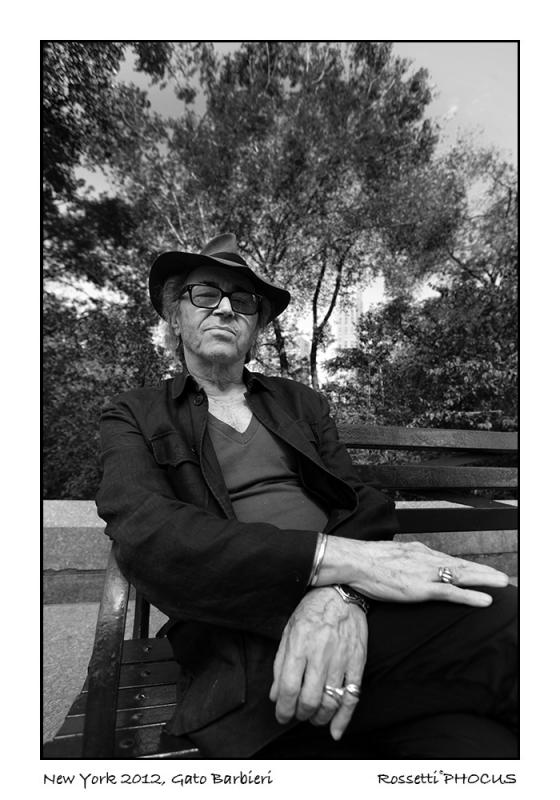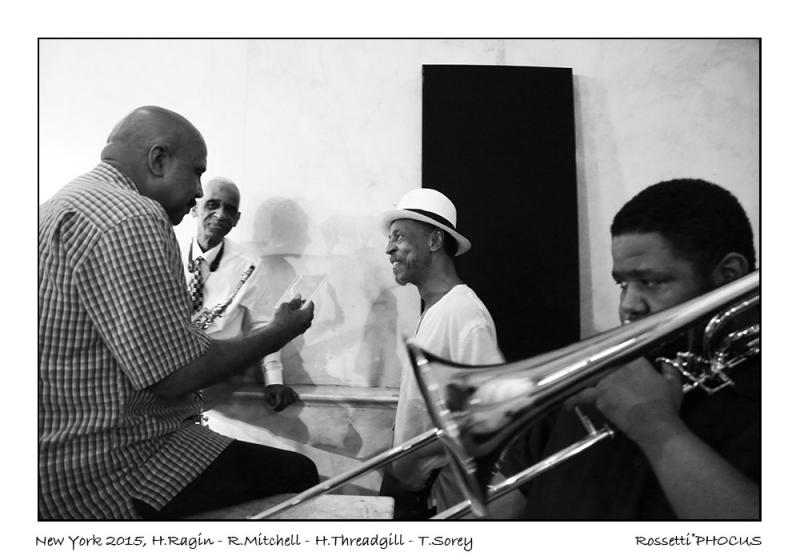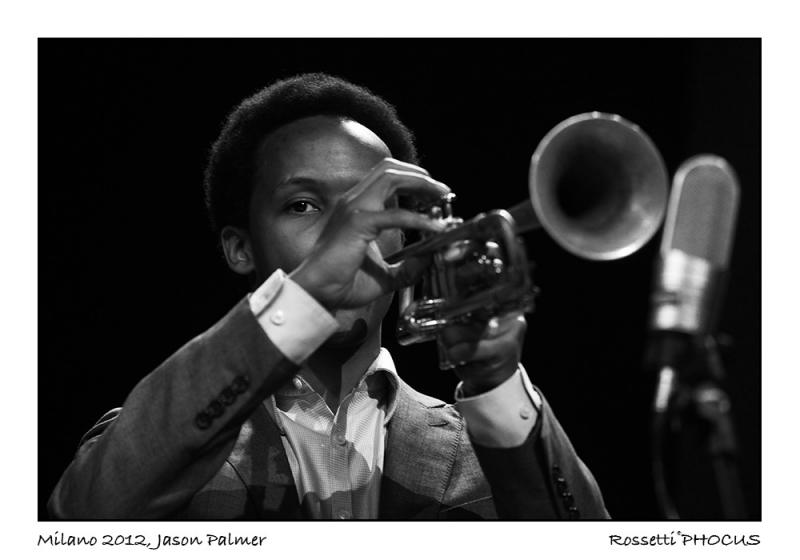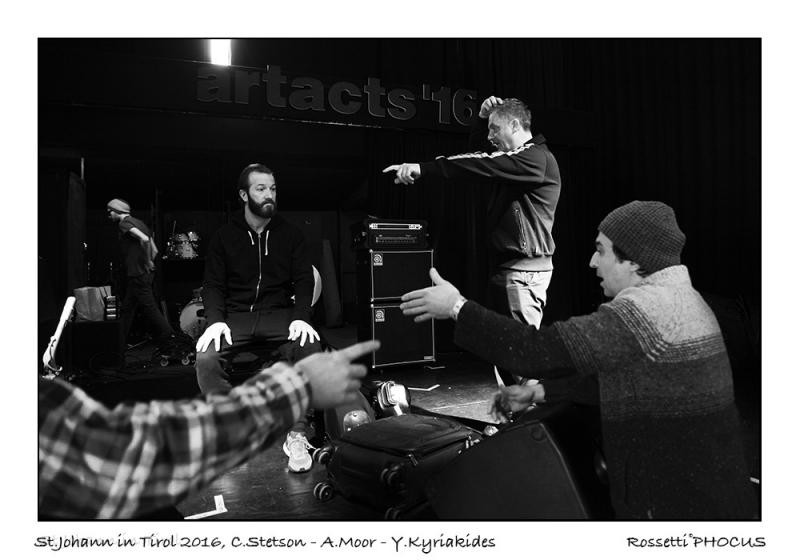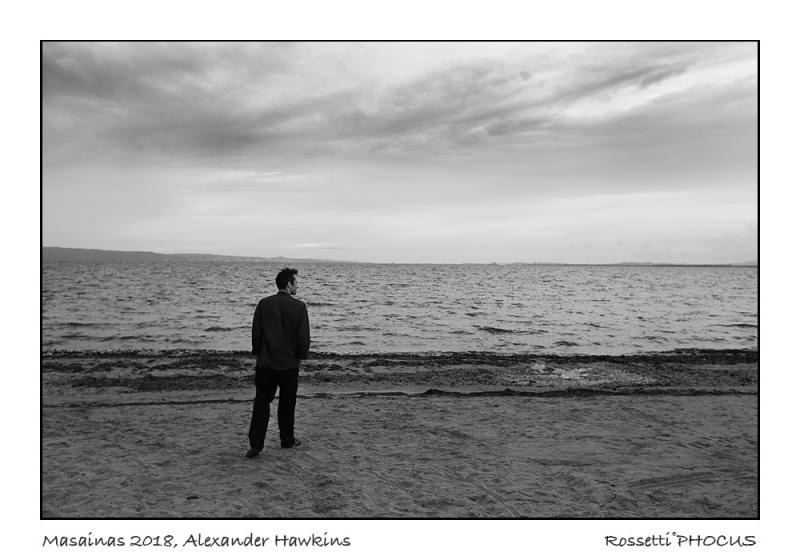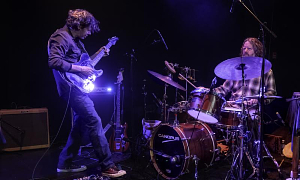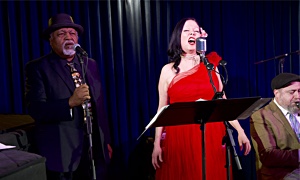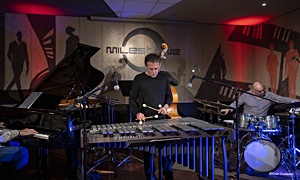Home » Jazz Articles » In Pictures » Seeing Jazz: The Photography of Luciano Rossetti
Seeing Jazz: The Photography of Luciano Rossetti
Leonard, who died in 2010, became a legendary jazz photographer and the Gordon photograph is iconic. It was used on the cover of the Gary Giddins/Scott DeVeaux book, Jazz (W W Norton & Company, 2009), it's featured in several jazz photography books, and prints are sold at galleries worldwide. What made the photo a classic? Leonard said the Royal Roost ambiance riveted him; he wanted to capture the room's feeling and the mystery of the music in a way that would keep bringing it back.
The Tradition
One hundred years ago, at the dawn of the Jazz Age, photographers created a visual archive that kept the institution alive for future generations. Many of those who chronicled the early days of New Orleans jazz, the Alphonso Trent's territory bands, and the riverboat orchestras of Fate Marable will never be known. Those anonymous visual artists set the stage for Val Wilmer, William Gottlieb, Chuck Stewart, and Francis Wolff. Some of the great jazz photographers came from inside the house. Bassist Milt Hinton was on the road with Cab Calloway in 1936, when he began his side gig with the camera. He amassed thousands of images of Billie Holiday, Count Basie, Dizzy Gillespie, Benny Goodman, and Art Blakey. Numerous Hinton images appear in the documentary film A Great Day in Harlem (1994).Charles Peterson was a New York-based jazz guitarist who became a photographer of jazz artists. By the late 1930s, while he was still active as a musician, his reputation was established as the first photographer to capture jazz musicians in the studio and in performance. His photographs appeared in Time, Life, and other national publications. His subjects included Tommy Dorsey, Louis Armstrong and Billie Holiday during her first recording of "Strange Fruit." American photographer Duncan Schiedt was active from the early 1930s through the 1990s. He was known for his jazz portraits which included those of Doc Cheatham, Duke Ellington, Elvin Jones, Art Tatum, Sidney Bechet, Zoot Sims, and Horace Silver.
Photographer William Claxton was synonymous with West Coast jazz. He took an approach opposite that of Herman Leonard. Claxton's subjects were often taken out of the club and studio; he posed them in the desert, on the California beaches, and at amusement parks. Claxton self-described his work as "jazz for the eyes." Jerry Stoll's career in photography often appeared to reflect his other positions as a documentary filmmaker, writer, and director. The official photographer of the Monterey Jazz Festival from 1958 through 1965, his stills are full of humanity and energy. His work at the festival bridged generations of jazz artists from Louis Armstrong, Billie Holiday, and Duke Ellington to the next wave including Miles Davis, John Coltrane, and Ornette Coleman.
W. Eugene Smith has been described as one of the most important American editorial photographers. His work with Life magazine in the late 1940s is recognized as groundbreaking long-form photojournalism. He documented everything from rural Americana to Albert Schweitzer in French Equatorial Africa in his relatively short life. Smith's famous and long encounter with jazz is documented in The Jazz Loft Project: Photographs and Tapes of W. Eugene Smith from 821 Sixth Avenue, 1957-1965 (Knopf, 2009). At the age of thirty-eight, Smith left his lucrative career at Life, abandoned his wife and four children in Croton-on-Hudson, New York, for a three-week venture that lasted eight years. Renting a crumbling loft next-door, he compiled more than forty-thousand photos of Charles Mingus, Zoot Sims, Bill Evans, Thelonious Monk, Roy Haynes, Sonny Rollins, Alice Coltrane, Don Cherry, Paul Bley, Henry Grimes and many others. His lens saw the jam sessions, rehearsals, local thieves, drug dealers, and addicts. For many on the New York jazz scene of the '60s and '70s, life was lived outside the margins; Smith captured gritty aspects that William Claxton avoided. In their overlapping worlds, these photographers distinguished themselves by the way they framed the story of jazz.
Luciano Rossetti
Luciano Rossetti should be familiar to readers of All About Jazz. His photojournalistic talents have been displayed across more than two-dozen articles in the past three years. A freelance journalist, he has been collaborating with the newspaper L'Eco di Bergamo since 2004, and Musica Jazz for more than twenty years. He also coordinated photographers for the Italian publication JAZZiT from 2000 until 2004. In 2004, Rossetti and Luca d'Agostino, and other photographers founded Phocus Agency, a photographic agency specialized in show business photography. Rossetti has been the official photographer for jazz festivals such as Fano Jazz by the Sea, Bergamo Jazz Festival, deSidera Teatro, Teatro Erbamil, TAE Teatro, Ai Confini tra Sardegna e Jazz, Contaminazioni Contemporanee and Premio Europa Teatro. He produced dozens of photo covers for journals and hundreds of collaborations for recordings. Rossetti's work has been exhibited from Rome to New York and has hosted global jazz photography forums.An advocate of multimedia presentations, he has collaborated with Vision Festival in New York and improvisers and composers such as Lawrence "Butch" Morris and Garrison Fewell. In 2019, with other photographers, he founded AFIJ—Association Italian Jazz Photographer. He was selected by the Jazz Journalist Association for the Best Jazz Photograph of the Year prize in 2016 and 2017.
All About Jazz: Could you tell me about where you grew up and what/who influenced your decision to become a photographer?
Luciano Rossetti: I grew up in a small village near Bergamo. I started taking pictures because it was fascinating to me to create an image and develop it in my dark room. There was an expert young photographer in my village who taught me how to work in the dark room. I started going to concerts as a photographer with him; he was the one that told me to look "behind" because "there" there's always something interesting. That's the way I started.
AAJ: What was the first photograph that you remember taking?
LR: The first that I remember was a picture of a small church in the middle of fields close to home, it was 1977. My first jazz photograph was at a concert of George Coleman Septet, with Bobby Watson and Billy Higgins.
AAJ: What is it about photography that appeals to you?
LR: I'm interested in telling stories through images.
AAJ: How did you become a jazz enthusiast, and are you a musician?
LR: I'm not a musician. I fell in love with jazz music for the capability of musicians to improvise starting from a theme, I always found it incredible. I started taking photos of jazz because I liked the informal and free way of being on stage and backstage; I liked the freedom I had to photograph musicians. Unfortunately, the kind of freedom is nowadays almost gone.
AAJ: Jazz and photography share some qualities: Both involve improvisation, and both are universal languages. What similarities do you see?
LR: Improvising is the common denominator of jazz and photography, or at least it is for the kind of photos I want to take. Jazz wouldn't be what it is without photography. Often, we think of musicians through their iconic photos and not only for their music. Herman Leonard, Francis Wolff, William Claxton and many others wrote jazz history with their photos as musicians did with their music.
AAJ: You have referred to some of your jazz photographs as "the B-Side of music," referring to a recording that typically receives less attention. What does it mean in your pictures?
LR: Photos I named "B-side of music" are about the aspects the usually the audience can't see: backstage, sound check, relax moments; when the audience is not yet there and musicians are relaxed. In those moments you can see a "side" of the musicians that is not visible on stage. That's what I try to photograph.
AAJ: You are the official photographer for several jazz festivals in Italy, including Fano Jazz by the Sea, the Bergamo Jazz Festival, and more than half a dozen others. How did you earn those roles in such a competitive field?
LR: Unfortunately, I'm no longer the photographer of those festivals. In the latest years many things changed and festivals has [less] and [less] money. I'd like to think they hired me as the official photographer because they liked how I told the festival's story through my photos.
AAJ: You often shoot your photos from just outside the spotlight. Do you feel like you can make yourself invisible in those intense settings?
LR: Being invisible is essential! To take pictures at soundcheck, you need to be invisible; the star is the musician, not the photographer; not to be seen is very important to catch the interplay between musicians.
AAJ: There is a timeless quality to black & white photography. Why do you choose that format?
LR: Jazz IS black and white! Black and white standardize image, delete unnecessary elements and transform them into part of the photograph.
AAJ: Do you feel that imagining what a monochromatic image will look like requires you to rethink the way you see the world?
LR: In some ways, I may say that I don't need to rethink my way of seeing the world when I take jazz pictures, I see in black and white!
AAJ: In many cases, what one hears, experiences, and photographs in live jazz can only be represented in its outer appearance. Many of your pictures manage to capture the performance's emotion; they tell a story by freezing time. Is it something that you think about when you're shooting?
LR: That's the cornerstone of my work. I always try to tell stories. I also work for newspapers; they often use one single photograph to illustrate an article about a concert or a show. So, I need to tell a concert or a show with a single photograph; it's quite hard, sometimes I succeed. When I have to tell a Festival, I can use many more photographs.
AAJ: Is there a particular image that you consider a favorite?
LR: My favorites are those that are part of my exhibition "Note a margine" (B-side of Music); I think that some of them, by themselves, tell a story. I'm really proud of that work; it's the result of almost forty years of music.
AAJ: Have you ever faced a very challenging situation while photographing live jazz? Could you elaborate on that?
LR: Sometimes it happens: when a musician doesn't want photos during soundcheck when you only have a few minutes to take a photo. That's a huge limit for me to do a good job. It's something similar to ask a journalist to write a review about a concert but let him hear the first two pieces only. That's what sometimes happens to photographers.
AAJ: Over the years that you've been covering live jazz, what have you learned or changed about the way you approach your craft?
LR: It is changed a lot. At first, I was young and shy, I was always worried to be on stage or backstage and be close to musicians. After so many years, many experiences and the fact that now I personally know many musicians, things are much better even if I still have a huge respect for musicians and their privacy.
AAJ: You started taking pictures in the late '70s, so you've been photographing for 40 years. What are the most important things you've accomplished?
LR: I'm really proud to have been exposed to prestigious places such as Jazz Record Center in New York, Museo della Triennale in Milan, Galleria Nazionale dell'Umbria in Perugia, Palazzo Reale in Milan, San Servolo-Ca Foscari in Venice, Villa Celimontana in Rome, GAMeC-Museo di Arte Contemporanea in Bergamo.
In 2007 I had the honor to organize, in behalf of "Ai Confini tra Sardegna e Jazz" Festival, the first (and so far, the only) meeting about the connection between jazz and photography. We had some of the most prestigious photographers in the world (Jimmy Katz, Guy Le Querrec, Jan Persson, Mephisto).
Another thing that makes me proud is to have had the honor to work with important musicians such as Garrison Fewell and Butch Morris for multimedia projects and books.
Tags
In Pictures
Karl Ackermann
Dexter Gordon
Kenny Clarke
Milt Hinton
Cab Calloway
Billie Holiday
Count Basie
Dizzy Gillespie
Benny Goodman
Art Blakey
Tommy Dorsey
Louis Armstrong
Doc Cheatham
duke ellington
Elvin Jones
Art Tatum
Sidney Bechet
Zoot Sims
Horace Silver
Miles Davis
John Coltrane
Ornette Coleman
Charles Mingus
Bill Evans
Thelonious Monk
Roy Haynes
Sonny Rollins
Alice Coltrane
Don Cherry
Paul Bley
Henry Grimes
Butch Morris
PREVIOUS / NEXT
Support All About Jazz
 All About Jazz has been a pillar of jazz since 1995, championing it as an art form and, more importantly, supporting the musicians who make it. Our enduring commitment has made "AAJ" one of the most culturally important websites of its kind, read by hundreds of thousands of fans, musicians and industry figures every month.
All About Jazz has been a pillar of jazz since 1995, championing it as an art form and, more importantly, supporting the musicians who make it. Our enduring commitment has made "AAJ" one of the most culturally important websites of its kind, read by hundreds of thousands of fans, musicians and industry figures every month.



